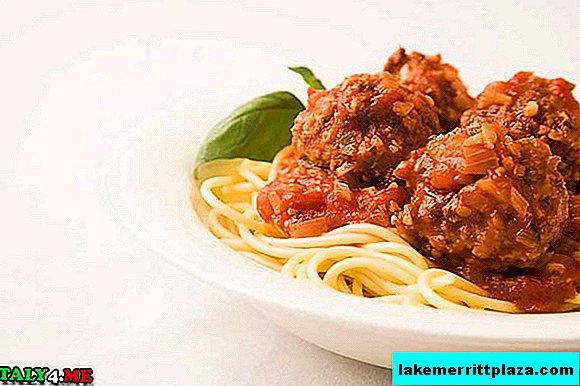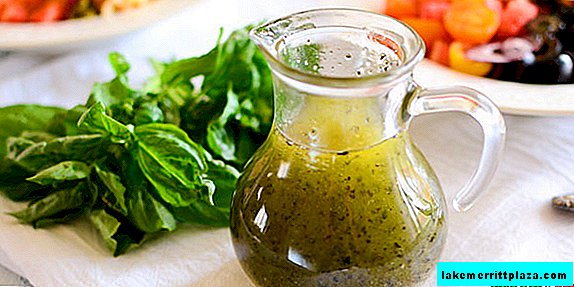The whole truth about Spaghetti Bolognese, Fettuccine Alfredo and other non-Italian dishes, which are traditionally considered the works of Italian chefs around the world. And beware of the chicken ...
Well-known fact: Italy has the best food in the world. We are not talking about professional chefs of other nations or about furious supporters of other types of cuisine. However, in an imaginary match "Italy VS Rest of the World" there is hardly a recipe that can compete with a plate of properly cooked spaghetti with seafood or good old creamy risotto.
And if this statement - peremptory, arrogant, but indisputable - is true, then it makes sense to refute all false beliefs about Italian food and recipes, which not really Italian. It is likely that by the end of the article you will hate its author.
Meatball Spaghetti

Although we all remember the scene from "Ladies and Tramps" and saw how Catherine Scorsese cooked meatball spaghetti for her beloved son Martin, there is no such dish in Italy.
Italian-American traditions led to the myth that such a combination is based on Italian cuisine, but this is not so. In Italy there is meatball sauce (and it is not eaten with spaghetti) and sometimes meatballs can be found in lasagna (although they are much smaller there), but be sure that no Italian family will invite you to meatball spaghetti for Saturday dinner.
Spaghetti bolognese

A similar situation. Bolognese sauce or even stew-alla-bolognese is a traditional sauce of the city of Bologna, which is prepared from tomato sauce and minced meat. Moreover, to call the cooking process long is to understate: we are talking about many, many hours of languishing on fire. But not a single resident of Bologna, like Emilia Romagna, and not a single Italian will eat stew with any pasta except tagliatelle, pappardelle or cappelletti. Maximum, with short tubes of pasta or struzzapreti. But excuse me, with spaghetti? ...
Fettuccine Alfredo

Actually a very funny story about an Italian dish that does not exist in Italy. One of the most popular gas stations in the world is almost unknown in Italy itself. It is enough to note that Wikipedia does not even have a page about this dish in Italian. Nevertheless, the English version is widely spread, according to which fettuccines were "created" by the Roman restaurateur Alfredo di Lelio. Why not?
Just a little clarification. Traditionally pasta with butter and Parmesan cheese used only in the following cases: with pain in the stomach, in the hospital, with a completely empty refrigerator or if there is still sage and you eat tortellini.
Pepperoni Pizza

If you arrive in Naples and ask for Pepperoni pizza (and if your waiter turns out to be a little deaf), you will most likely get pizza with pepper. Because in Italian the word "pepperoni" sounds almost the same as "peperoni", which means "pepper". In Italy there is no type of salami called pepperoni: if you still want to get it, you should order pizza with sausage (con salsiccie), devilish (alla diavola) or spicy salami (con salame piccante).
Pineapple Pizza

Same. And also, as everyone is well aware, pineapple in Italy is a “widespread” fruit.
Marinara sauce

What is everywhere proudly called marinara sauce, in Italy it is most likely the usual tomato sauce that is used to make pizza, pasta, etc. Except that without garlic, onions and any herbs, except fresh basil. The only marinara known in Italy is the marinara pizza, which is prepared in Naples. This is pizza without mozzarella, only with tomato, garlic, oregano and olive oil. (This is where the very common mistake of adding oregano to tomato sauce went from here? Never do that!)
Neapolitan sauce

Again, no one in Italy knows what Neapolitan sauce is. In Italy, there can be many options, depending on the region and family traditions (with and without garlic, with and without onions, with and without carrots, with added sugar to reduce acid, and so on). In general, tomato sauce is simply called "salsa" or "sugo", depending on whether you are located north or south of Rome.
Garlic bread

Maybe also with butter? Not at all. Not a single Italian restaurant will serve it to you and no baker will sell it: instead, try asking for a bruschetta with freshly chopped tomatoes or a bruschetta grated with garlic and sprinkled with olive oil.
Carbonara

If your young man is preparing for you carbonara with bacon (pancetta) instead of cheek (guanciale), you should part with it. You can also add:
- If your boyfriend is cooking carbonara with cream, throw it.
- If your boyfriend is cooking garlic carbonara, toss it.
- If your boyfriend is cooking carbonara with yogurt, drop it.
- If your boyfriend is cooking parsley carbonara, toss it.
- Finally, if your boyfriend is cooking carbonara with onions, drop it.
- And if your boyfriend buys a jar of “ready-made” carbonara sauce, demand an injunction.
Italian wedding soup

Here you are: in the Campania region, there is a tradition for Christmas or Easter cooking soup with green vegetables and meat, most often pork. But do not try to order it out of season or in restaurants in Rome or Venice: you will introduce the waiter into a stupor. If you really really want him, order in Italian: this is Minestra Maritata, which in Neapolitan Italian means “wedding soup”, or even “conjugal soup”.
Chicken pasta

Chicken is not a dressing. Pasta is not a side dish. The end of the discussion.
Parmigiana with chicken or veal

Parmigiana is made from eggplant, tomatoes, rocked cheese and bisilica. Neither chicken nor veal. In some regions of Italy, it is customary to alternate layers of eggplant with ham or beaten eggs, only to make it a little better digestible.
Pesto

Pesto (Pesto) is used only as an additive to pasta, mushrooms and bechamel sauce for lasagna. The only Ligurian supplement you can afford is to add diced potatoes and green beans to boiling water with spaghetti. Be careful with those who use pesto with salads, bruschetta, chicken and anything else.
Italian dressing

The salad is seasoned with extra virgin olive oil, salt and vinegar, or extra virgin olive oil, salt and balsamic vinegar, or extra virgin olive oil, salt and lemon. All other gas stations are not Italian.
Parmesan for every meal

Do not sprinkle parmesan on the pizza you ordered at the restaurant (the cook has already taken care of this). Also, never add it to seafood pasta.








